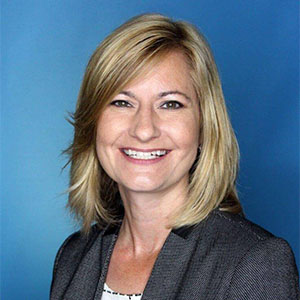In March 2021, Atrium Health implemented virtual nursing in the inpatient setting. As the demand for virtual nursing grew, leaders at Atrium Health applied lessons learned to refine its virtual care model. Atrium Health’s virtual nurses monitor up to 10 patients at a time, allowing them to serve as an extension of the bedside nurses.
Leaders from Avidex and Atrium Health met in October 2023 to discuss their virtual care journey and what they have learned from their experiences. Below are highlights from their dialogue.
Contents
1. The Evolution of Atrium Health's Program
2. The Current Program
2.1 Measurable Results
3. Impact on the Inpatient Experience
4. The Future of Virtual Nursing
Participants
The Evolution of Atrium Health's Virtual Care Program
Jennifer Jenkinson: Can you tell us a little bit about the history of your virtual care program? When did it start?
Nicole Deal: Virtual nursing here at Atrium Health started in March 2021. Take your mind back a little bit to that time if you will. There was a lot of chaos; a lot going on. There were significant vacancies in the unit where we started virtual nursing. It was primarily a COVID population.
Jada Dockery: Our PPE (Personal Protective Equipment) was there and available to our teams, but we wanted to preserve as much as possible. We found some cameras in the basement and set them up in patient rooms, trying to ease the burden on clinicians for when it was not necessary for them to be in the patient room. We also had a group of nurses who really wanted to work but could not be around COVID patients for a variety of reasons, so we started out with them as our virtual nurses. In 10 days, we were up and running.
Donna Taylor: And how has virtual nursing evolved since that time?
Deal: We have spent a lot of time with our shared governance teams across the market to really understand what the needs are and how virtual nursing can address those needs. From a workforce perspective, we started our virtual nursing care model without FTEs but absorbed those light-duty nurses into the space. We recognized at the time that the model was useful for keeping experienced nurses at the bedside with support from virtual nurses.
That is how the core team model evolved over that first year. Since then, we have added another care delivery model we call the ‘two-one,’ model, which allows nurses on the units to work two days at the bedside, then one day as a virtual nurse. We have research studies underway on both models. From the camera vantage point, we also have oversight of patient observation, in which nursing assistants monitor patients for safety issues, such as falls and certain low suicide risks.
Taylor: How have things evolved from a technology perspective?
Deal: We initially placed tablets on rolling carts in patient rooms to give them access to their virtual nurses. We realized very quickly that having face-to-face interaction on camera was the biggest impact for patients, especially during a time when they were not able to see the full faces of care team members entering the room because masks were required in all areas. We compared patient satisfaction in units with audio-only communication to units with video, and there was a significant difference. Our patient experience scores went from 14th percentile to 80th in our pilot. As we looked at improving our virtual care model, we thought about the challenges we had with the tablets on carts. They get lost, people do not have time to move them, and they take up space in the room. That is what led us to switch to ceiling-mounted cameras and in-room TVs for delivering virtual nursing.
The Current Virtual Care Program
Taylor: How do you introduce virtual care to the patient? What do you tell the patient to help them understand how it works and feel comfortable with it?
Dockery: When a patient is admitted, they get to meet both their primary nurse and their virtual nurse at the same time. The virtual nurse is alerted prior to the patient's arrival so they can be on camera when the patient enters the room. So, if I am the virtual nurse, I am there on the patient’s TV while the primary nurse is at the bedside. I will explain my role and talk about how this is a different care model. I tell the patient everything I can do to help them and explain how they can reach me, by pressing a button, or by crossing their arms for me to see on camera. They will hear a doorbell sound, and then I come up on their TV screen. I also clarify that I will be an extra set of eyes on the patient 24/7, I will be there in the background, but I cannot hear them unless we are on an active call. I also explain that they are not being recorded at any point.
That helps to address any privacy concerns that the patient might have. It puts them at ease to know that someone always has eyes on them, but no one is listening in on their conversations. We have had very few patients express concerns over being on camera, but when it happens, we allow them to decline virtual care if they prefer. They have the right to refuse it just like any other medical care.
Measurable Results
Jenkinson: Can you share any changes in measures you are tracking?
Deal: We saw a 56% reduction in call bell volume during the timeframe of our original pilot. We have seen improvements in falls. We also measured rapid response events because, as patient status events were witnessed, the virtual nurse would call a rapid immediately. In the original pilot, the rapid response rate went up and codes went down, which is exactly what you want to happen. We saw that correlation immediately.
Jenkinson: That’s really amazing. You have to believe there are people who are alive today because of that. What do new nurses think about your virtual care model?
Deal: We get a lot of feedback from new graduate nurses. I have a little bit of a story. We have had a couple of situations in which a preceptor was not available for our new graduate nurses when they needed to administer medication. Previously, they would have two choices. They could start the medication on their own and hope they got it right (not an ideal situation), or they could delay care until a more experienced nurse was available to assist them.
Now, with the virtual nurse, they have a third option. They can call the virtual nurse and ask, “can you check this line with me? Can you check that the rate is correct? Can you be a witness for this medication?” There were many scenarios brought forward by our new graduate nurses where they did not have to delay care for their patients because they had the virtual nurse to support them when their preceptors were not available. It increases the level of comfort for our new graduates to know that an experienced nurse is just a call away.
Taylor: Have you seen an impact on nurse retention?
Deal: We are tracking it, but anecdotally, yes. We are really focusing on addressing burnout and increasing satisfaction of the nurses at the bedside, keeping them here, and growing them here. With the two-one model, nurses can start virtual nursing after being here for a year. They can work two days a week at the bedside, then work in virtual care for a day. That gives them a regular break from the physical demands of patient care, and they have a growth opportunity in learning the virtual nurse role. That way, they stay here and grow professionally, as well as use their talents and expertise to give back to their unit the support it needs.
Dockery: Virtual nurses also do a lot to help nurses at the bedside. We found initially that the bedside team did not want to bother the virtual nurse, so we put the onus on the virtual nurse to really be of service to the bedside nurse. If a clinician steps into a room, the expectation is that the virtual nurse will immediately join by camera to interact with the clinician. If the patient’s provider comes into the room, the virtual nurse can do rounds with the provider, just like the primary nurse that provides direct care. When the primary nurse is in the room, the virtual nurse jumps in to ask “can I help you do this, can I chart this for you?”
Jenkinson: I can see how that could be a powerful recruitment and retention tool, both for new nurses and nurses that might be farther along in their careers. How has it impacted job satisfaction?
Deal: When assessing job satisfaction among nurses, we look at the teammate experience surveys. The results are aggregated by the manager and represent the multiple service lines they own. While managers cannot isolate data for each of their service lines, the manager who owns the virtual service line has an extremely high teammate engagement score, which has never wavered over the past year that she has been in that position.
Taylor: What role does virtual care play in onboarding new nurses?
Dockery: Just recently we had executive guests touring some of our facilities and they wanted to see our virtual nursing care program. A new graduate stepped in. She saw us in a room talking about virtual nursing and told the team of visitors that her one-year work anniversary is in March. She said she cannot wait to be the virtual nurse on the other side of the camera because the program has made such an impact for her and her practice. She wants to be able to help and be impactful for other new graduates that come along.
We also spoke with a nurse who was on a virtual shift at the time. She told us she is new to nursing, with just three years of experience. She mentioned that the virtual role allows her to observe the more senior nurses on the unit and how they do their work. She said she has learned things on the other side of the camera that she can take back to the bedside when it is her turn to care for patients.
Virtual Care's Impact on the Patient Experience
Jenkinson: How has virtual care impacted the patient's experience?
Deal: There are some powerful stories. I remember when we went to round on one patient and his daughter was there. When she saw us, she burst into tears. She told us she was so thankful she was able to go home and get an entire night’s sleep because she knew we were here with her dad, watching him, and taking care of him. She said she was relieved to know he was not alone and that there would always be a set of eyes on him, so if he tried to get up or was in distress, a nurse would be there to intervene. She told us she got the best night’s sleep she had in months because she knew the virtual nurse was there. It made me cry.
Dockery: I think all of us were crying.
Jenkinson: Thank you for sharing that.
Taylor: Can you tell us what is unique about your virtual nursing model?
Dockery: Having variety, I think, has been huge for the nurses at the bedside to be able to do the two-one model. We are encouraged by what we have heard through their direct comments, that they “physically feel better, they’re more energized,” and “I’ve regained passion that I had because while it’s nursing, it’s a different kind of nursing that allows me to help my peers.” They’re growing as leaders and critical thinkers since they’re overseeing care as a whole.
Deal: In the virtual nurse role, they often have patients that they have cared for at the bedside during their two previous shifts. On their virtual shift, they can take a closer look at a patient’s chart, review vital signs, delve into their history, and notice trends or nuances that bedside nurses do not always have the time to explore. The devil is in the details, and sometimes we miss them. With virtual nursing, we are a lot less likely to miss those nuances and can notice things that can impact the patient’s experience, their length of stay, and even readmissions.
Dockery: Something we heard from a nurse at our Pineville campus who is doing the two-one model is that she can give guidance to the charge nurse on how to make assignments. For instance, “I have these ten patients for today, and the ones in rooms 5 and 6 are very acute, needing a lot of one-on-one care, so they should not be assigned to the same nurse. I would recommend that the incoming charge or the off-going charge split these two patients up and assign them to different nurses.” It supports more equitable assignments across the board, which means better care for patients.
Taylor: Can you tell us about your virtual care collaborative?
Deal: Patricia Mook, our Senior VP of Nursing Operations, and I are both part of an ANOL subcommittee on care models, care model redesign, and technology. We meet and share different care models, technologies, the different virtual nursing platforms, and talk about how they are being used in different facilities. That is how it started, and eventually we decided “let’s start our own collaborative; we can do it ourselves!” We also decided to include vendors to make sure our technology partners, like you all, had an opportunity to hear about our successes as well as our struggles. It is important to have all the right stakeholders at the table for these conversations.
The Future of Virtual Nursing
Taylor: What do you see for the future of virtual nursing at Atrium Health?
Deal: At some point, I believe every room is going to have a camera. Even every room in the Emergency Department (ED). When we have holds in the ED, virtual nurses can get some of their care started. They can begin the admission, start a plan of care, and get them going with their inpatient items while they are still in the ED waiting on an inpatient bed. We began this third phase of our Virtual Nursing program in May 2023, and it has been so remarkably successful thus far. We have also expanded the service to our Navicent market as well.
Jenkinson: Do you ever see that there would be a time when you would not need virtual care in the hospital anymore? Or will the standard of care going forward always include some sort of virtual care?
Deal: Virtual nursing care for us is the care model of the future. Just yesterday, I spoke with a nurse who said, “do not take this away from us, please. This is what is keeping me holding onto this job and not leaving to go elsewhere. That is what is keeping me at the bedside.”
Nursing is in a paradigm shift. We are at a pivotal point where we must make changes for our nurses' sake. We must preserve our nurses and care for them in a way that allows them to care for their patients.
And that is what virtual nursing does.
Based in Charlotte, North Carolina, Atrium Health is part of Advocate Health, the third-largest nonprofit health system in the United States. Atrium Health serves patients at 40 hospitals and hundreds of care locations in the Carolinas, Georgia and Alabama and is nationally recognized as an early adopter and exemplar in virtual care. It is a recipient of a Beacon Award for Excellence by the American Association of Critical Care Nurses (AACN) for its Virtual Critical Care program and was featured in a case study by the American Hospital Association Physician Alliance for its Virtual Hospital program.
For its virtual nursing program, Avidex collaborated with Atrium Health’s virtual care provider to enable them to broadcast the virtual nurses on their in-room televisions, via integration with Avidex’s TigrPX interactive patient engagement solution.







